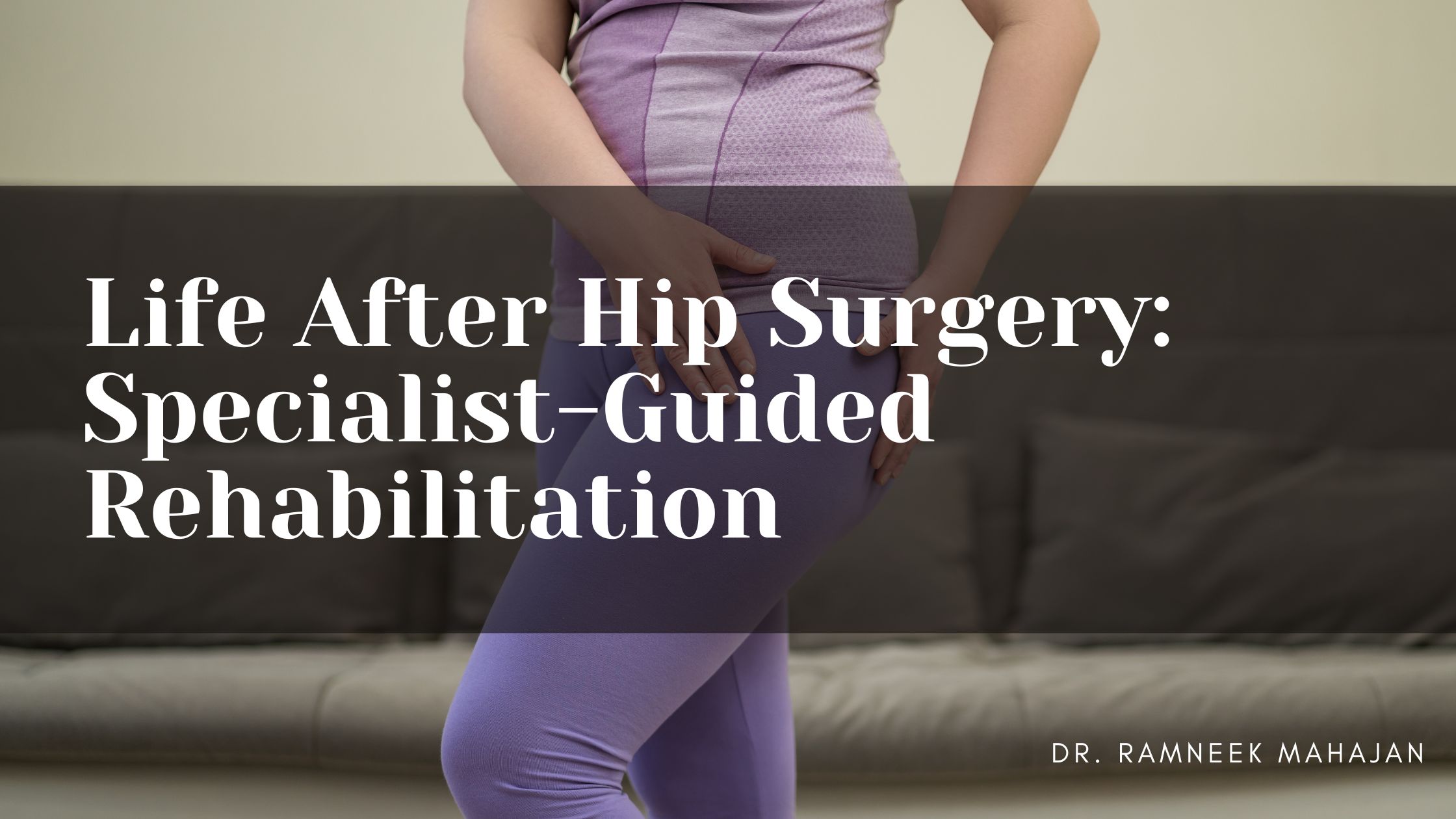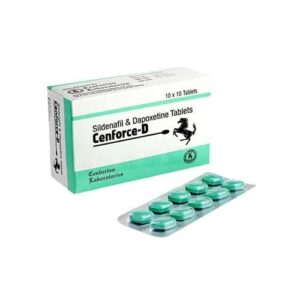
Life After Hip Surgery: Specialist-Guided Rehabilitation
Introduction
Undergoing hip surgery is a significant event that marks the beginning of a new chapter in your life. While the surgery itself is a crucial step towards regaining mobility and alleviating pain, the real journey begins with rehabilitation. A hip surgery specialist is a highly trained medical professional specializing in surgical interventions to treat hip-related conditions and injuries, ensuring optimal mobility and pain relief for patients. Their expertise encompasses advanced techniques tailored to individual patient needs, promoting effective recovery and improved quality of life.
Understanding Hip Surgery
Hip surgery can be a daunting prospect, but understanding the different types of surgeries and their purposes can help demystify the process.
Types of Hip Surgeries
Total Hip Replacement: Total hip replacement involves replacing both the acetabulum (hip socket) and the femoral head (thigh bone) with prosthetic components. This surgery is often recommended for those suffering from severe arthritis or extensive joint damage. It’s a comprehensive procedure aimed at providing a long-term solution for chronic hip pain and mobility issues.
Partial Hip Replacement: Partial hip replacement, or hemiarthroplasty, only replaces the femoral head. It’s typically performed when there’s a fracture in the femoral neck, especially in older patients. This surgery is less invasive than a total replacement and focuses on restoring function to the damaged part of the hip.
Hip Resurfacing: Hip resurfacing is less invasive and involves capping the femoral head with a metal covering, rather than removing it. This option is usually for younger, more active patients with strong bone quality. It preserves more of the patient’s natural bone structure, which can be advantageous for future treatments.
Reasons for Hip Surgery
Osteoarthritis: Osteoarthritis is the leading cause of hip surgeries. The wear and tear on the hip joint over time can lead to debilitating pain and mobility issues, necessitating surgical intervention. This degenerative joint disease gradually breaks down the cartilage in the hip, causing bones to rub together painfully.
Fractures: Hip fractures, often resulting from falls, are common among the elderly and can severely impact mobility and quality of life, often requiring surgical repair. These fractures can be particularly dangerous for older adults due to the risk of complications like blood clots and pneumonia.
Other Conditions: Conditions like rheumatoid arthritis, avascular necrosis (loss of bone tissue due to lack of blood supply), and congenital hip dysplasia (a condition present from birth where the hip joint doesn’t form properly) also lead to hip surgeries to restore function and relieve pain. Each condition has unique challenges and requires tailored surgical and rehabilitation approaches.
The Immediate Post-Surgery Phase
The period immediately following hip surgery is critical for setting the stage for a successful recovery.
Hospital Stay
Immediately following hip surgery, patients typically stay in the hospital for a few days. During this time, medical staff closely monitor your recovery, manage pain, and prevent complications such as infections or blood clots. This initial phase is crucial for ensuring that you are stable and ready to begin the next steps in your recovery journey.
Initial Recovery Steps
Early recovery involves getting out of bed and beginning gentle movements under the supervision of healthcare professionals. This early activity is vital for preventing blood clots and promoting circulation. You’ll start with simple tasks like sitting up, standing, and taking a few steps with the help of a walker or crutches.
Managing Pain and Swelling
Pain and swelling are common post-surgery. Medications, ice packs, and elevation techniques are used to manage these symptoms effectively, ensuring a more comfortable recovery period. Pain management is crucial, not just for comfort, but also because controlling pain allows you to participate more fully in rehabilitation exercises.
Role of Rehabilitation in Recovery
Rehabilitation is not just a phase of recovery; it’s the bridge to regaining a functional and active life.
Why Rehabilitation is Crucial
Rehabilitation is the cornerstone of successful hip surgery recovery. It helps restore mobility, strengthen muscles, and improve the overall function of the hip joint, ensuring long-term success. Without proper rehabilitation, the risk of complications like stiffness, weakness, and impaired mobility increases significantly.
Goals of Rehabilitation
The primary goals of rehabilitation are to regain strength, flexibility, and range of motion in the hip, enabling patients to return to their daily activities and hobbies without pain or discomfort. Rehab aims to restore you to your pre-surgery activity levels and, in many cases, improve your quality of life beyond what it was before surgery.
Specialist-Guided Rehabilitation
Rehabilitation is most effective when guided by specialists who understand the intricacies of hip recovery.
Role of a Physical Therapist
A physical therapist plays a pivotal role in your recovery, providing expert guidance and creating a customized rehabilitation plan tailored to your specific needs and progress. They will teach you exercises, monitor your progress, and adjust your rehab plan as needed to ensure optimal recovery.
Creating a Personalized Rehab Plan
Each patient’s rehabilitation plan is unique, taking into account their age, overall health, and specific surgery details. A personalized plan ensures the most effective and efficient recovery path. Your physical therapist will consider factors such as your fitness level, any pre-existing conditions, and your personal recovery goals when designing your program.
Early Rehabilitation Exercises
Starting with gentle exercises is essential for a safe and effective recovery.
Importance of Gentle Movement
Early exercises focus on gentle movements to prevent stiffness and promote blood flow. These initial steps are crucial for laying a strong foundation for more intensive rehabilitation later. Gentle movements help maintain joint flexibility and muscle strength without putting too much strain on the healing tissues.
Sample Exercises
Ankle Pumps
Ankle pumps are simple yet effective. Moving your ankles up and down helps improve circulation and prevent blood clots. This exercise can be done while lying in bed and is one of the first movements you’ll be encouraged to do post-surgery.
Glute Squeezes
Squeezing your glutes while lying down helps activate and strengthen the muscles around your hip, preparing them for more demanding exercises. These squeezes are easy to perform and help re-engage muscles that may have weakened due to surgery or inactivity.
Progressive Rehabilitation
As your recovery progresses, the rehabilitation exercises will become more challenging to continue building strength and flexibility.
Increasing Intensity Over Time
As your recovery progresses, the intensity of exercises increases. This gradual approach ensures your hip can handle more strain without causing damage. Your physical therapist will guide you in gradually adding resistance, increasing repetitions, and introducing new movements to keep challenging your muscles.
Transitioning to Weight-Bearing Exercises
Weight-bearing exercises are introduced to further strengthen the hip joint and surrounding muscles, improving stability and balance. These exercises help simulate everyday activities like walking and standing, making them critical for functional recovery.
Examples of Intermediate Exercises
Standing Hip Abduction
Standing hip abduction exercises strengthen the muscles on the outside of your hip, improving lateral stability. To perform this exercise, you stand and slowly lift your leg to the side, keeping your knee straight, and then return to the starting position.
Mini Squats
Mini squats help build strength in the quadriceps and glutes, essential for daily activities like walking and standing up. Start with shallow squats, gradually increasing the depth as your strength improves. This exercise mimics the motion of sitting down and standing up, making it highly functional for daily life.
Advanced Rehabilitation Techniques
Advanced techniques are designed to further enhance your strength, balance, and overall mobility.
Strength Training
Strength training focuses on building muscle mass and endurance, essential for supporting the hip joint and preventing future injuries. Exercises may include leg presses, lunges, and resistance band workouts tailored to your specific needs and capabilities.
Balance and Coordination Exercises
-
Improving balance and coordination is vital for overall mobility and reducing the risk of falls.
-
Single-Leg Stands
Standing on one leg challenges your balance and strengthens the muscles that stabilize the hip joint. This exercise can be progressed by adding challenges such as closing your eyes or standing on an unstable surface. -
Balance Boards
Using a balance board or stability disc challenges your balance and engages core muscles. These tools are excellent for improving proprioception and stability, which are crucial for navigating uneven terrain and preventing falls.
Cardiovascular Conditioning
Cardio exercises like stationary biking or swimming help maintain overall fitness and support a healthy recovery process. These activities increase heart rate and circulation without putting excessive strain on the healing hip joint.
Tools and Equipment for Rehabilitation
Using the right tools can enhance the effectiveness of your rehabilitation program.
Essential Rehab Tools
Tools such as resistance bands, exercise balls, and ankle weights add variety and challenge to your exercises. They help target specific muscle groups and can be used both at home and during physical therapy sessions.
Benefits of Using Specialized Equipment
Specialized equipment like continuous passive motion (CPM) machines can aid in rehabilitation by safely moving the hip joint through its full range of motion. These devices help prevent stiffness and improve joint flexibility without requiring active muscle contraction.
Nutritional Support During Recovery
A balanced diet plays a crucial role in healing and promoting overall health during recovery.
Importance of a Balanced Diet
Eating a well-balanced diet provides essential nutrients like protein, vitamins, and minerals that support tissue healing, muscle repair, and overall immune function. It also helps maintain energy levels needed for rehabilitation exercises.
Foods That Aid in Healing
Incorporate foods rich in protein, such as lean meats, fish, beans, and dairy products, to support muscle recovery and tissue repair. Foods high in antioxidants, like fruits and vegetables, help reduce inflammation and support overall healing.
Mental and Emotional Aspects of Recovery
Recovery from hip surgery involves more than just physical healing—it’s also about mental and emotional well-being.
Coping with Post-Surgery Blues
It’s normal to experience a range of emotions after surgery, including sadness, frustration, or anxiety. Acknowledging these feelings and seeking support from loved ones or a counselor can help you navigate this challenging time.
Strategies for Maintaining a Positive Outlook
Maintaining a positive mindset can significantly impact your recovery. Set realistic goals, celebrate small achievements, and focus on progress rather than setbacks. Engage in activities you enjoy that don’t strain your hip, such as reading, listening to music, or spending time with friends.
Monitoring Progress
Tracking your progress is essential for staying motivated and ensuring you’re on track with your recovery goals.
Setting Realistic Goals
Work with your healthcare team to set achievable short-term and long-term goals based on your current abilities and rehabilitation timeline. Celebrate each milestone reached, whether it’s increased flexibility, reduced pain, or improved mobility.
Regular Check-Ups with Your Specialist
Attend follow-up appointments with your surgeon or physical therapist as scheduled. These appointments allow your healthcare team to monitor your progress, address any concerns or complications promptly, and adjust your treatment plan as needed.
Common Challenges and Solutions
Overcoming challenges during recovery is part of the process.
Dealing with Setbacks
It’s common to face setbacks, such as increased pain or slower progress than expected. Stay patient and trust the rehabilitation process. Communicate openly with your healthcare team about any difficulties you encounter so they can provide guidance and support.
Tips for Overcoming Common Obstacles
-
Pain Management: Follow your prescribed pain management plan and use ice packs or heat therapy as recommended to relieve discomfort.
-
Fatigue: Balance activity and rest, listening to your body’s signals. Incorporate relaxation techniques like deep breathing or meditation to reduce stress and promote recovery.
-
Stiffness: Perform gentle stretching exercises regularly to maintain joint flexibility. Avoid overexertion and seek guidance from your physical therapist on safe stretching techniques.
Conclusion
Recovering from hip surgery requires dedication, patience, and expert guidance through specialist-led rehabilitation. By following a personalized rehabilitation plan, incorporating supportive nutrition, and maintaining a positive mindset, you can achieve a full recovery and regain your quality of life. A hip arthritis specialist is a medical expert dedicated to diagnosing and treating arthritis affecting the hip joint, employing both non-surgical and surgical methods to alleviate pain and restore mobility for patients. Their focus is on providing personalized care to improve joint function and enhance overall quality of life.
FAQs
How long does rehabilitation take after hip surgery?
Rehabilitation typically takes three to six months, but full recovery can take up to a year, depending on individual factors such as age and overall health.
Can I walk immediately after hip surgery?
Most patients begin walking with assistance (like a walker or crutches) within a day or two after surgery. Progressing to independent walking may take several weeks, depending on your recovery progress.
What should I avoid during my recovery?
Avoid high-impact activities, excessive bending, and twisting motions that could strain your healing hip joint. Follow your healthcare team’s guidance on activity restrictions.
How can I manage pain during rehabilitation?
Pain management strategies include medications prescribed by your doctor, ice packs, elevation, and gentle exercises. Always consult your healthcare provider for personalized pain management advice.
Is it normal to feel depressed after hip surgery?
Yes, it’s common to experience emotional ups and downs during recovery. Seek support from loved ones and consider talking to a mental health professional if you’re struggling emotionally.


